For such a large bird Western Grebes can really scoot over the water surface when the need arises.
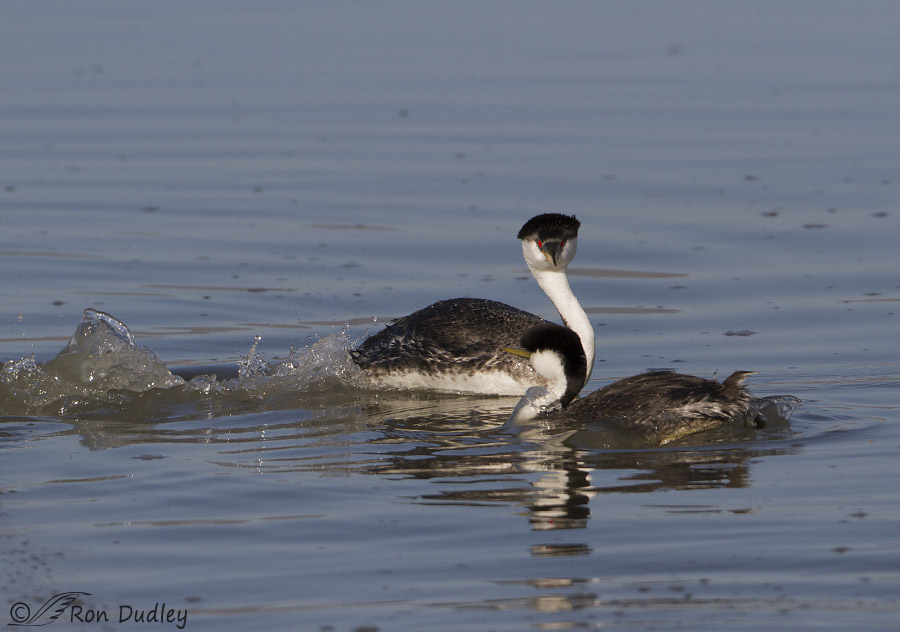
1/4000, f/6.3, ISO 500, Canon 7D, Canon EF500mm f/4L IS USM, not baited, set up or called
During breeding season male Western Grebes are extremely sensitive to other males approaching their mates. This male had been swimming peacefully a few yards to the left of his smaller mate when he spotted another grebe (presumably another male, I didn’t notice at the time) approaching her from the right. Without warning he took off in pursuit of the interloper. By the time I locked focus on him he was passing within inches of his mate and as he did so he gave her a quick glance, as if to say “don’t even think about it, just ignore this guy and I’ll send him packing”.
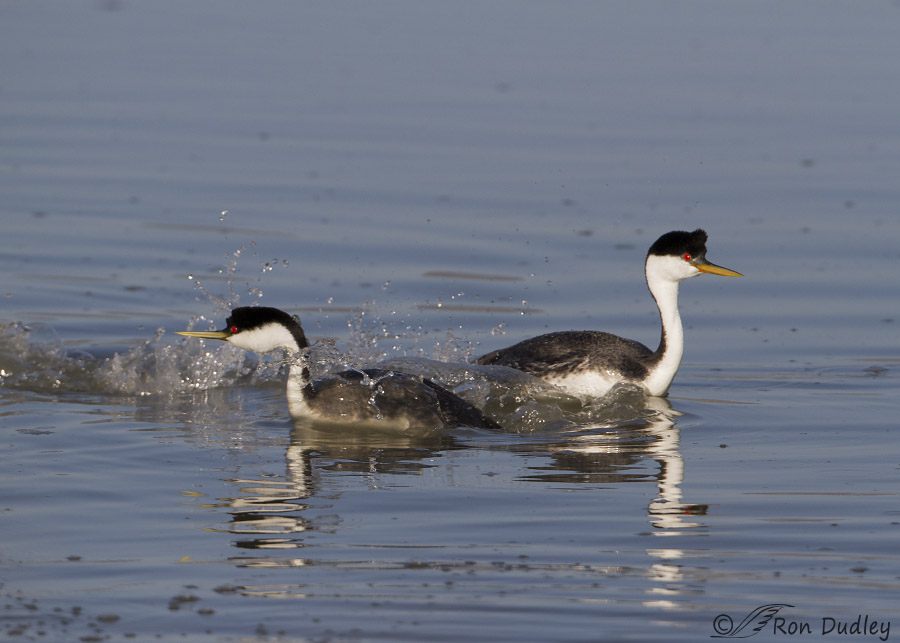
1/4000, f/6.3, ISO 500, Canon 7D, Canon EF500mm f/4L IS USM, not baited, set up or called in
An instant later as his backwash engulfed the female his attention was once again riveted on the intruder.
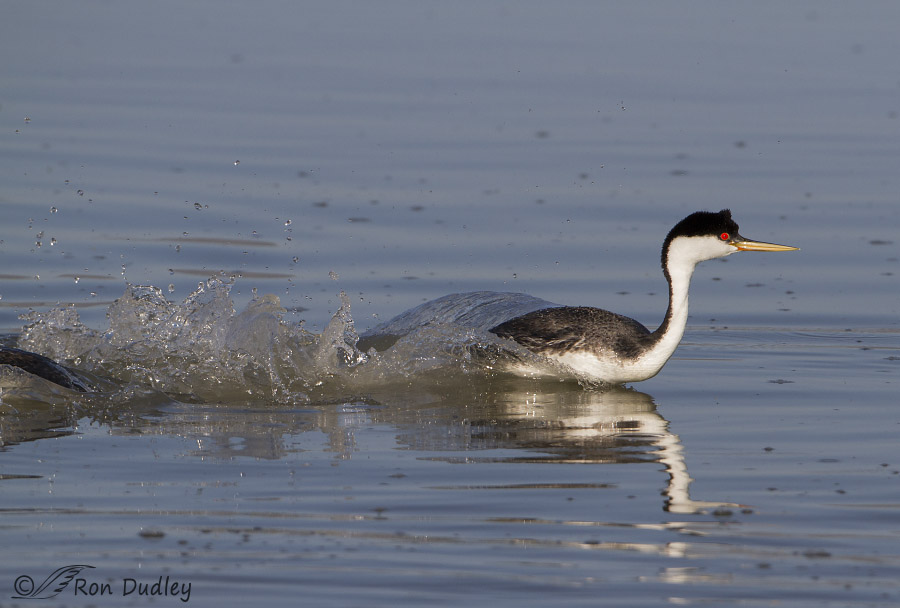
1/4000, f/6.3, ISO 500, Canon 7D, Canon EF500mm f/4L IS USM, not baited, set up or called in
Here you can still see the back of the female at the left edge of the frame. Those churning rear-placed feet and legs create an impressive wake…
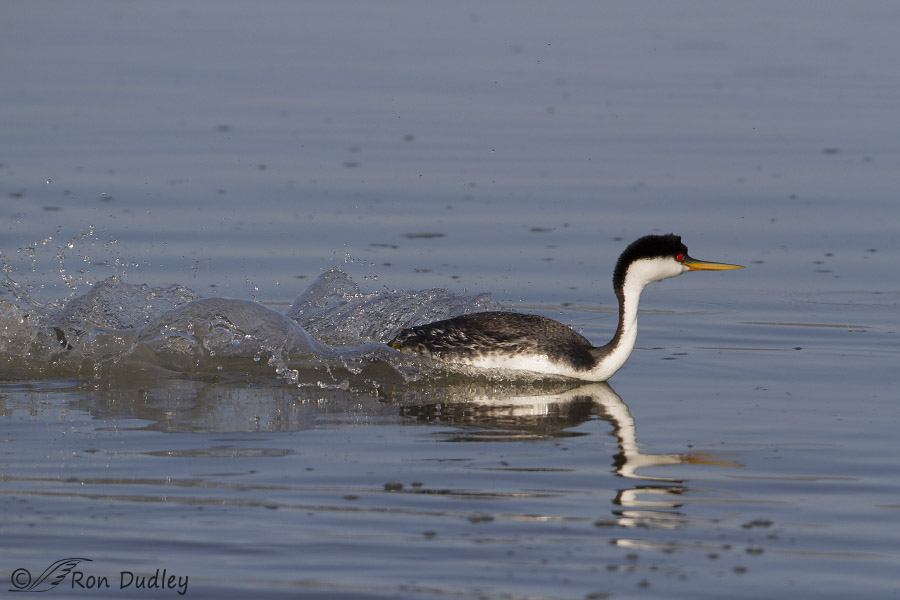
1/4000, f/6.3, ISO 500, Canon 7D, Canon EF500mm f/4L IS USM, not baited, set up or called in
as they propel that large, plump body across the surface. This action is fast and difficult to track and I lost focus on the grebe as it approached the other bird, who vamoosed to avoid a confrontation.
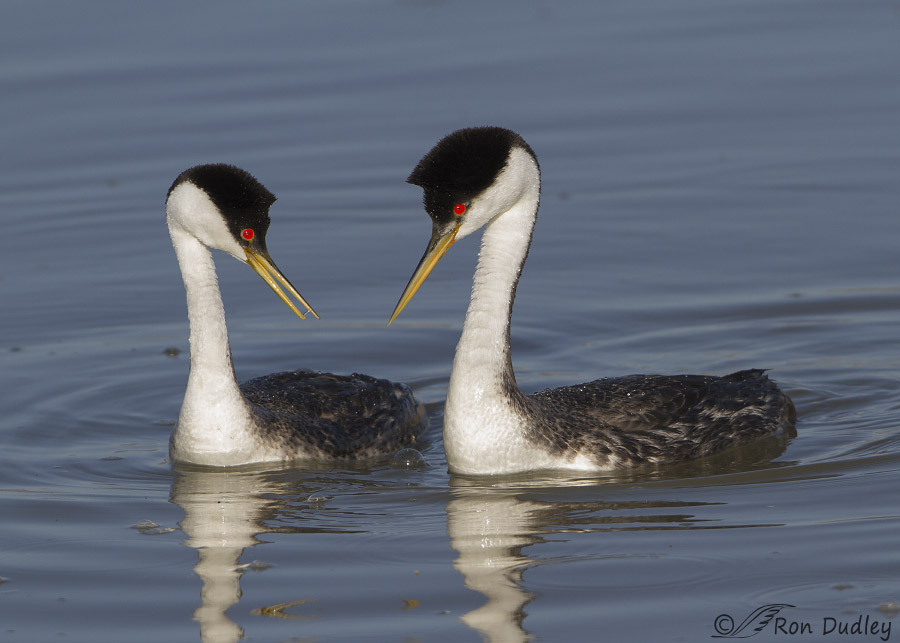
1/42000, f/6.3, ISO 500, Canon 7D, Canon EF500mm f/4L IS USM, not baited, set up or called in
But just a few moments later the love-birds were making goo-goo eyes at each other as they reaffirmed their pair bond. Here the size difference between the sexes is quite apparent.
I’ve noticed that Western (and Clark’s) grebes seem to have a different style as they run over the surface of the water as compared to that of their Pied-billed Grebe cousins. As seen here Western Grebes run on the surface using only their feet for propulsion but…
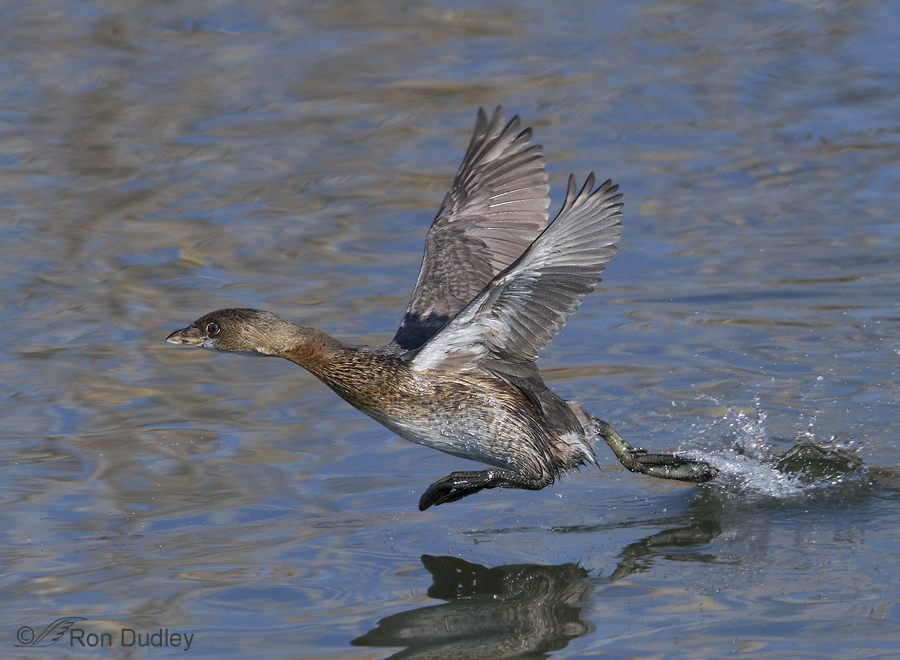 1/3200, f/7.1, ISO 500, Canon 7D, Canon EF500mm f/4L IS II USM, not baited, set up or called in
1/3200, f/7.1, ISO 500, Canon 7D, Canon EF500mm f/4L IS II USM, not baited, set up or called in
the significantly smaller Pied-billed Grebes use their wings in addition to their feet. Presumably the difference in running styles is related to the much smaller size and body mass of the Pied-billed.
I do wonder if other observers concur with my own observation of this apparent behavioral difference.
But both styles serve the birds well – believe me, all of them can really scoot!
Ron


Wonderful behavioral shots Ron!
Charlotte
Walking on water is one thing – to run on it is truly amazing.
And that ‘wash’ is quite something.
Thanks Ron – big smiles here this morning.
Thank you, Elephant’s Child.
The story really is a large part of why I love your blog. You are an inveterate teller of tales!
For me that’s a huge compliment, Arwen. Perhaps it’s a leftover from my teaching days. If I didn’t entertain my kids and keep their interest as I drilled information and skills into them they’d have run me out’a town!
Ron–your photos are ALWAYS superb, but it’s your observations, experience and comments that are so incredible, educational and enjoyable….and really make you stand out head and shoulders above your colleagues…
I don’t know, Patty, I have some pretty impressive and knowledgeable colleagues but your confidence in me is much appreciated. Thanks very much.
Ron:
Terrific action shots and I love the last shot of the pair. We don’t see Western Grebes here, so I can’t comment on the behavioral differences. Hooded Mergansers have a water-running style similar to that shown in your photos. Do you have opportunities to observe their behavior?
Dave
Thank you, Dave. I’ve only rarely photographed Hooded Mergansers and have never really had a chance to observe much behavior from them.
Ron–
Here’s a link to a website that has some information about a research project conducted at Upper Klamath Lake by a Harvard graduate student…Haven’t been able to find anything on the net that summarizes the results of her research…maybe it’s ongoing…apparently the exact mechanics of their “rushing” display is fairly complicated
http://www.wildlensinc.org/projects/Grebes.html
Interesting link, Jeff. Thank you. I did not know that these birds are “the largest known animals to walk on water”.
I should have mentioned in my text that even when these birds are “rushing” they don’t use their wings for propulsion or lift. The wings are raised during the process but not extended and they do not flap.
For anyone who has never seen grebes rushing (when they really do “walk on water”), here’s a link to one of my posts that shows the behavior.
https://www.featheredphotography.com/blog/2012/06/04/rushing-western-grebes/
I always thoroughly enjoy your gorgeous pictures, but I also love your narratives!
Thank you on both counts, Marjie!